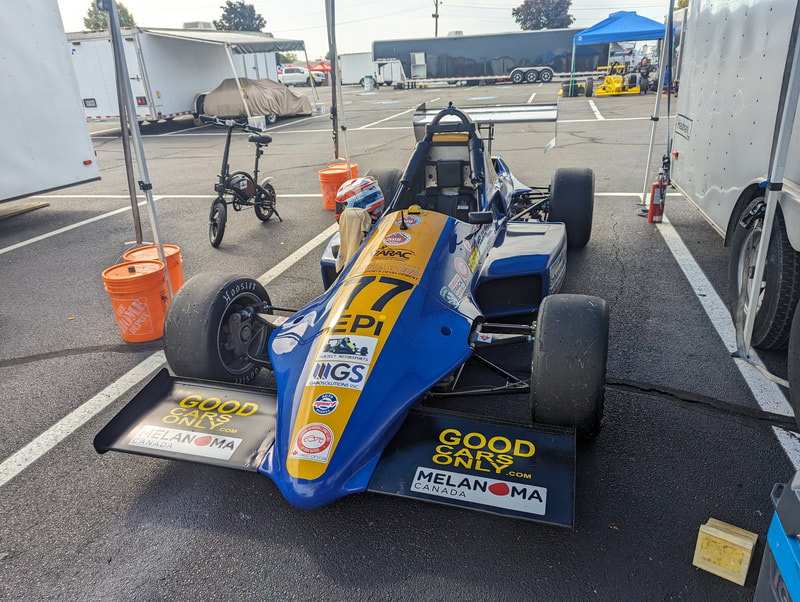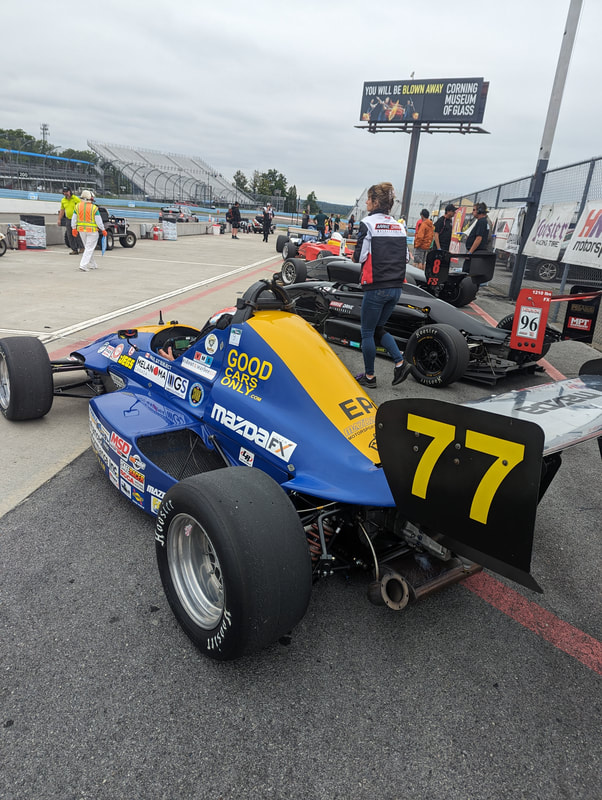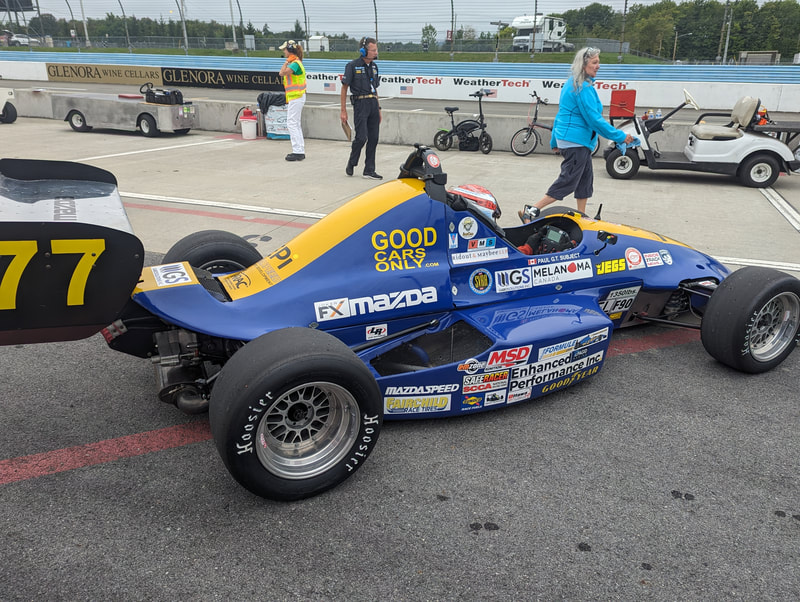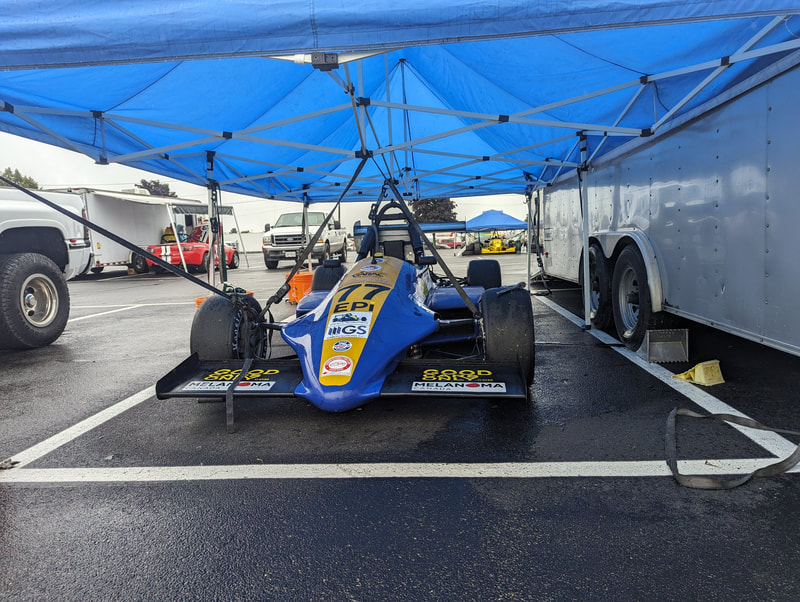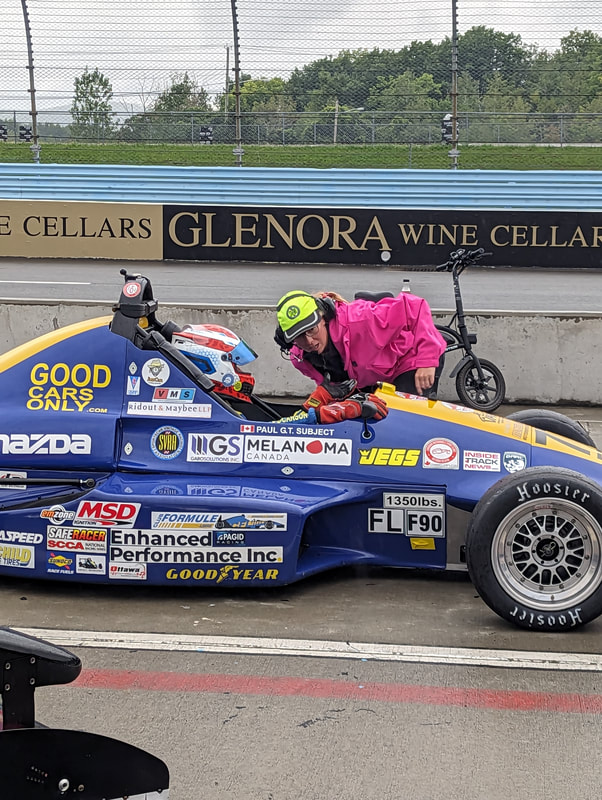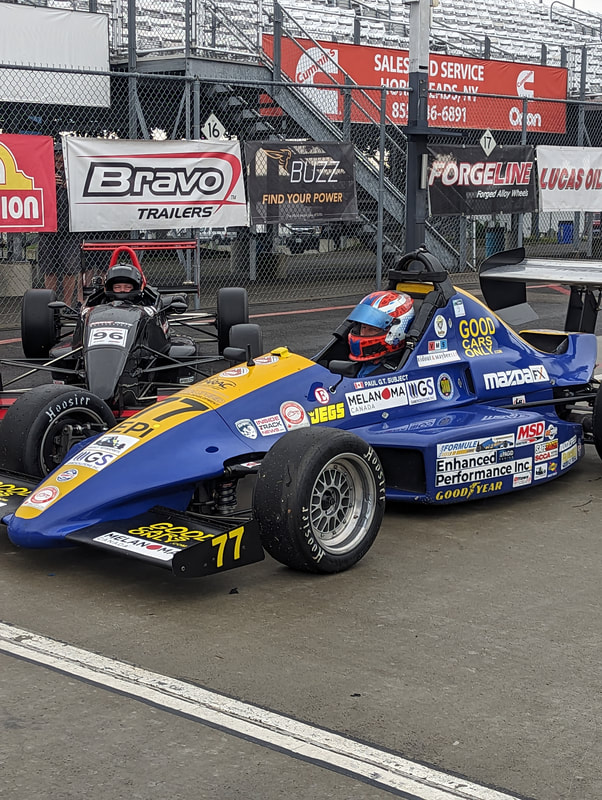VARAC 44st Vintage Grand Prix at Canadian Tire Motorsports Park – June 13th to June 16th Race Report6/19/2024 The Enhanced Performance, Good Cars Only, Gabo Solutions #77 Formula Mazda Team had an excellent weekend at the VARAC 44th Vintage Grand Prix, held at Canadian Tire Motorsports Park (CTMP). We were placed in the Formula Classic Race group. There was a total of 31 cars in our race group including, Formula Fords, F2000’s, F1200’s, a Super Vee and several Formula Mazda’s as well as a few other historic open wheel cars. The weather ranged from raining to beautiful sunny days with temperatures ranging from 20°C to 27°C. Over the course of Thursday, Friday, Saturday and Sunday, we were on track a total of 10 times; 3 on-track practices during the Thursday test day, followed by one practice and on qualifying session on Friday, Race 1 & 2 on Saturday, as well as the Ludwig Heimrath Open Wheel Challenge and Races 3 & 4 on Sunday. Our race group included some beautiful open wheel race cars. On the Thursday test day, the weather was mixed with some sun in the morning and a torrential rain storm Thursday evening. Our best lap for the test day was a 1:24 – a pretty respectable lap time, however off from our typical lap times in the 1:22’s. Friday morning, the weather was quite nice – we set a time of 1:28.994, which was the 2nd best time for the session of all the other cars. During our qualifying session, we ended up with a fair qualifying time of 1:26.083 – 4 one hundredths of a second off the leader, placing us in P2 in our race group and class. The weather on Saturday was sunny and warm with a high in the low 20’s. During Race 1, and together with the leader, we pulled away comfortably from the field on the first lap, we finished P2 in our race group and P2 in our class with best lap time of 1:24.474. During Race 2, once again we pulled away from the field on the first lap with the leader and finished P2 in our race group and P2 in our class with a best lap time of 1.25.705. Late Saturday afternoon, we participated in the Ludwig Heimrath Open Wheel Challenge. There were 9 cars in total in our race group and we cruised to a P1 victory with a best lap time of 1:25.965. The weather on Sunday was just beautiful with sunny skies and a high of 23°. During Race 3, we set a best lap time of 1:24.739 finishing P2 in out race group and P2 in our class. During Race 4, we held steady in second place in a caution filled , shortened race, setting a fast lap time of 1:24.897, finishing in P2 in our race group and in our class. All in all, a superb race weekend! A special thank you to our guest crew chief for the weekend, Christina Murdoch. And to Bill Vallis & Shirley Vallis of Vallis Motor Sport for their trackside support during the VARAC VGP and to Canadian Tire Motorsports Park for hosting such a fantastic, safe event!! And last, but certainly not least, we want to thank our long-suffering family which allows us to continue to race……….
0 Comments
The Enhanced Performance, Good Cars Only, Gabo Solutions #77 Formula Mazda Team had a good race weekend at the BEMC Spring Trophy Races held at Canadian Tire Motorsports Park. We were entered in the Formula Classic/Formula Libre race group. There were a total of 17 cars in our race group including, six F1200’s, three F1600’s, two Formula 4’s, one Historic Formula Ford, one Formula Four, one Van Diemen F2000, amongst some other cars. The May weather was very nice Friday and Saturday with rain and fog Sunday morning, with some sunshine on Sunday afternoon with temperatures ranging from 10 to 20° C. Over the course of Friday, Saturday and Sunday, we were on track a total of 8 times; 4 on-track practices during the Friday test day, followed by qualifying and Race 1 on Saturday and Race 3 on Sunday. We opted out of racing in Race 2 on Sunday morning as we felt the conditions were just not safe with the amount of fog around the race course. Our race class had some beautiful open wheel race cars including Jim Morton’s unbelievably fast Gamma Tercero F4. Our best lap for the test day was a 1: 24 flat on old Hoosier tires from the previous year, pretty impressive for old race tires. Saturday morning, the weather was perfect – about 17°C and a clear sky. We switched to another used set of Hoosiers. We set a reasonable P3 practice time of 1:24.747 (P1 in our class). During qualifying, we set a P4 time of 1:25.824 (P2 in our class). During Race 1, we diced back and forth with Jim Morton and spun on the outside of turn 2, relegating us to P6 in our race group and P2 in our class. Our best lap time in Race 1 was a 1.24.740. The weather on Sunday morning was dreadful, with rain and a very heavy fog. We elected not to run in Race 2 as we just did not feel comfortable with the amount of heavy fog around the race track. As it turned out, lap times were way off as drivers struggled to see. We had a great start at the beginning of Race 3 right behind Jim Morton gapping the rest of the pack by the end of lap 3. Sadly, Jim was able to get away from us using lapped traffic, we were never able to catch up him. We finished the race in P3 (P1 in our class) with a best lap time of 1:27.028. Not a great lap time, as the track was still very green from all of the rain over the course of Sunday. Here is our video race report from the weekend. And a big thank you to Bill and Shirley Vallis of Vallis Motor Sport for their trackside support during the BEMC Spring Trophy Races and to Canadian Tire Motorsports Park for hosting such a fantastic event!! And last, but certainly not least, we want to thank our long-suffering family which allows us to continue to race………. Our first engine start if the 2024 season!!! It sounds awesome!!!!! This is our first maintenance update 2024 for the 10th of April. Stay tuned as we start the race engine in the #77 Formula Mazda for the first time in this year!! Sadly, our Subject Motorsports Facebook page has been taken over by hackers. As a result, we will not be using that particular social media platform for the foreseeable future. In the meantime, we will still post regular updates to our YouTube Channel and our LinkedIn Page.
Please do not accept any Facebook direct messages from our Subject Motorsports account. If you need to contact me, please use email or phone. Sorry for the inconvenience. At this special time of year, we want to take a moment to wish everyone a very Merry Christmas and a happy and healthy 2024.
Please join us at a track near you to watch us during our 2024 racing season.
Over the past several weeks, we have managed to complete a lot of our off-season maintenance. |
Categories
All
Archives
June 2024
|





